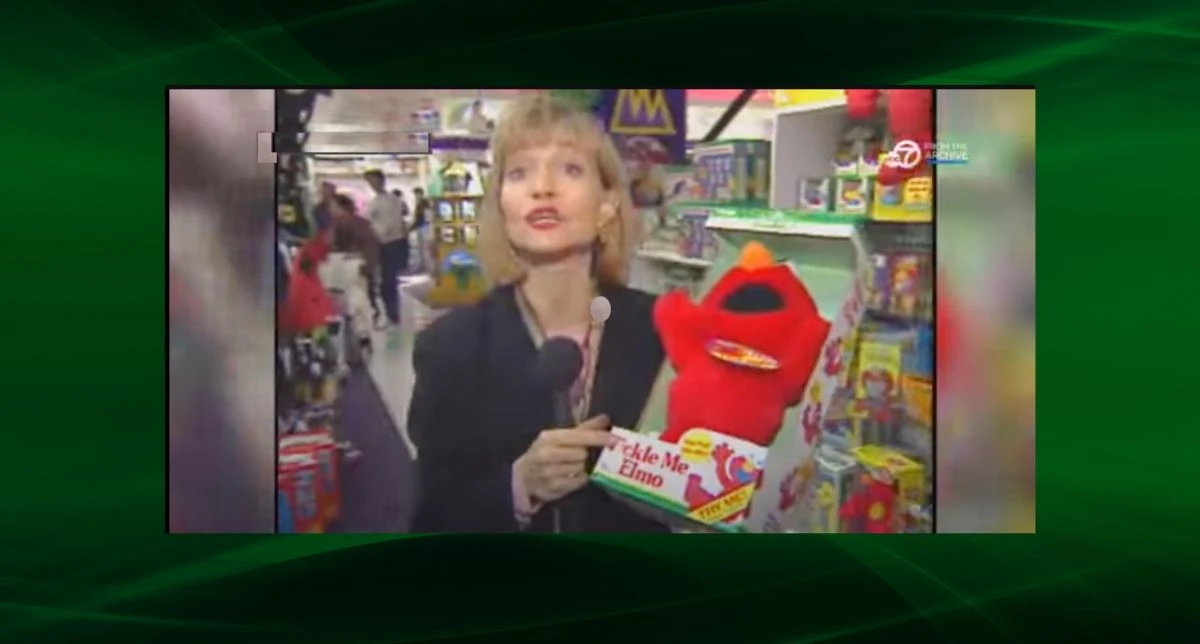Throughout American history, certain toys have captured children’s imaginations and become cultural phenomena, especially during the Christmas shopping season. These toys reflect the technological advancements and societal trends of their times and highlight the changing nature of play and consumer behavior. Here is a look at ten of the most iconic best-selling toys that have defined holiday seasons across different decades:
1. Mr. Potato Head
Introduced in 1952, Mr. Potato Head was the first toy advertised on television, revolutionizing marketing strategies for children’s products. The original set included various plastic facial features and accessories that children could insert into real potatoes, promoting creativity and interactive play. Its success paved the way for future toy advertising and set a precedent for interactive playthings.
2. G.I. Joe
In 1964, Hasbro launched G.I. Joe, the first action figure designed specifically for boys. Standing 12 inches tall with movable joints, G.I. Joe allowed boys to engage in imaginative military play. Its introduction marked a significant shift in the toy industry, challenging traditional gender norms and expanding the market for action figures.
3. Cabbage Patch Kids
Cabbage Patch Kids dolls became a nationwide sensation in 1983, leading to massive demand and unprecedented shopping frenzies. Each doll came with a unique name and adoption certificate, creating a personalized experience for children. The craze surrounding these dolls highlighted the power of marketing and the emotional connection consumers can develop with toys.
4. Nintendo Game Boy
Released in 1989, the Nintendo Game Boy was a groundbreaking handheld gaming device that allowed children to play video games on the go. Its portability and strong lineup of games, including the iconic “Tetris,” made it a must-have item during the holiday season. The Game Boy’s success underscored the growing influence of electronic gaming in children’s entertainment.
5. Tickle Me Elmo
Tickle Me Elmo, based on the popular “Sesame Street” character, became the hottest toy of 1996. When squeezed, Elmo would laugh and vibrate, delighting children nationwide. The toy’s popularity led to widespread shortages, with some secondary market prices reaching exorbitant levels. This phenomenon highlighted the impact of media exposure and the lengths to which consumers would go to secure coveted holiday gifts.
6. Furby
Introduced in 1998, Furby was an interactive electronic pet that could “learn” English over time, starting with its own language, “Furbish.” Its lifelike responses and ability to develop new behaviors made it a fascinating companion for children. The Furby craze demonstrated the increasing integration of technology into toys and the appeal of interactive playthings.
7. Razor Scooter
The Razor Scooter became a cultural phenomenon in 2000, appealing to both children and adults. Its lightweight, foldable design made it a convenient mode of transportation and a popular recreational item. The scooter’s widespread popularity during the holiday season highlighted a renewed interest in outdoor play and personal mobility devices.
8. ZhuZhu Pets
ZhuZhu Pets, introduced in 2009, were robotic hamsters that moved and made sounds, simulating real pet behavior without the responsibilities of pet ownership. Their affordability and interactive features made them a hit during the Christmas season, showcasing the enduring appeal of robotic pets in the toy market.
9. Hatchimals
Launched in 2016, Hatchimals were interactive creatures that “hatched” from an egg through the child’s care and interaction. The anticipation of the hatching process and the surprise element of discovering which creature was inside captivated children. The toy’s success underscored the appeal of interactive, surprise-based play experiences.
10. Nintendo Entertainment System (Mid 1980’s, full release 1986)
The Nintendo Entertainment System (NES) became a holiday sensation during Christmas 1986, marking a turning point for the video game industry in the United States. Released in North America in 1985, the NES initially faced skepticism due to the video game market crash of 1983. However, by 1986, the system had gained traction, thanks to its innovative games, quality hardware, and Nintendo’s strategic marketing. Key to its success was the bundled game *Super Mario Bros.*, which captivated players with its engaging gameplay and colorful graphics, setting a new standard for the industry. Retailers reported that NES consoles flew off the shelves during the holiday season, as demand surged among families and gamers eager for the next big thing in entertainment. Nintendo’s clever use of in-store demonstrations and promotions helped introduce the console to skeptical parents, while kids were drawn to its robust library of games, which included hits like *Duck Hunt* and *The Legend of Zelda.




















